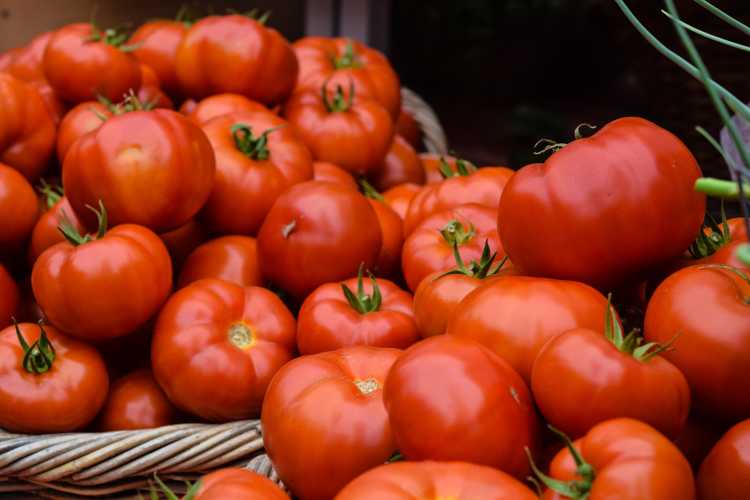Tomato prices in India have thrown household budgets into disarray as this kitchen staple is expected to cost Rs 200 per kilogram soon. There is a nationwide shortage of tomatoes, resulting in a 400% increase in prices. In some states, tomatoes are now more expensive than petrol, with cities like Delhi and Mumbai witnessing average tomato prices of Rs 160. This comes just months after farmers were discarding their tomato stock because prices had plummeted to rock-bottom, selling for as low as Rs 1.50 per kilo.
The escalating costs of vegetables in recent years serve as a clear indicator of how climate change is impacting our food systems. Unpredictable weather patterns, heatwaves, and delayed monsoon have affected crop yields, resulting in increased prices for vegetables and fruits.
READ | Climate finance: The most vulnerable countries need more than promises
How climate change is affecting tomato prices
Climate change is wreaking havoc on crops, numerous studies have shown. Heatwaves in March and April killed tomato plants, while unexpected rains in May destroyed crops in Northern India, affecting all vegetables, not just tomatoes. These factors also contribute to inflation rates. According to a CRISIL analysis, pulses inflation could continue to rise for another six to seven months due to uneven rains impacting sowing. The delayed monsoon this year has also affected soybean crops, resulting in a decrease in acreage in major growing states compared to last year.
Heavy rains reduce the yield and quality of produce by diminishing photosynthetic activity and altering the metabolism and enzymatic activity of crops. Other crops like apple, pear, peach, and plum have also suffered from reduced yield and deteriorating quality. Staple vegetables are particularly vulnerable to climate change-driven price hikes due to their high demand.
In June, tomato prices began to surge due to the shortages. Tomato prices in March ranged from Rs 5-10 per kilo to around Rs 5-15 per kilo in April. In May, farmers were forced to sell their produce for Rs 2.50-5 per kilo. Tomatoes are highly perishable, and seasonal variations have a significant impact on prices. Extreme weather conditions exacerbate existing issues, such as a broken supply chain, with climate change being the culprit behind the rising tomato prices.
This year’s Kharif harvest is particularly responsible for the tomato woes, as disruptions in this season have sent prices skyrocketing. Crops in Karnataka and Maharashtra were hit by two separate viruses, cucumber mosaic virus (CMV) and tomato mosaic virus (ToMV), respectively. These viruses devastated the crops, leading to reduced supplies in vegetable markets and the current situation. The viruses have also affected the quality of tomatoes, prompting major chains like McDonald’s to temporarily remove them from their menus.
India is the second-largest producer of fruits and vegetables after China. It is surprising that every year, one or more staple vegetables witness significant price jumps. The question arises: where does this large produce go? With a diverse range of crops grown in different agro-climatic conditions, even if a crop fails in one area, the supply remains stable due to other regions. The stability is upset by the lack of adequate infrastructure and logistical support for the storage and transportation of the produce.
Vegetables like tomatoes are highly perishable and require proper warehousing facilities for storage. The Reserve Bank of India has acknowledged that food wastage resulting from inefficient post-harvest practices is one of the key causes of high food inflation in India.
India faces challenges with its cold storage capacity. Currently, the capacity stands at 35 million (3.5 crore) tonne, falling short by 3-4 million (30-40 lakh) tonne. At least 70% of the country’s storage facilities are concentrated in four states: Uttar Pradesh, West Bengal, Punjab, and Gujarat. And 70% of the cold storage capacity is dedicated solely to potatoes.
Most of the 7,000-8,000 refrigerated trucks operating in India are utilised for pharmaceuticals and dairy products. With tomatoes being highly perishable, having a shelf life of just around two weeks, they quickly spoil without proper temperature and humidity control.
The government and policymakers must take proactive steps to enhance storage facilities to preserve excess vegetables that grow seasonally in different parts of the country. Measures should also be implemented to improve food security, especially in light of rising global temperatures. The government could intervene by facilitating smooth transportation and distribution of these crops to other states.
Another potential solution to address vegetable inflation is to preserve them during periods of surplus, following a strategy successfully deployed by Amul. The milk giant Amul began converting excess buffalo milk into powders and butter in the past. Implementing a similar strategy with staples like tomatoes may help keep prices in check.

